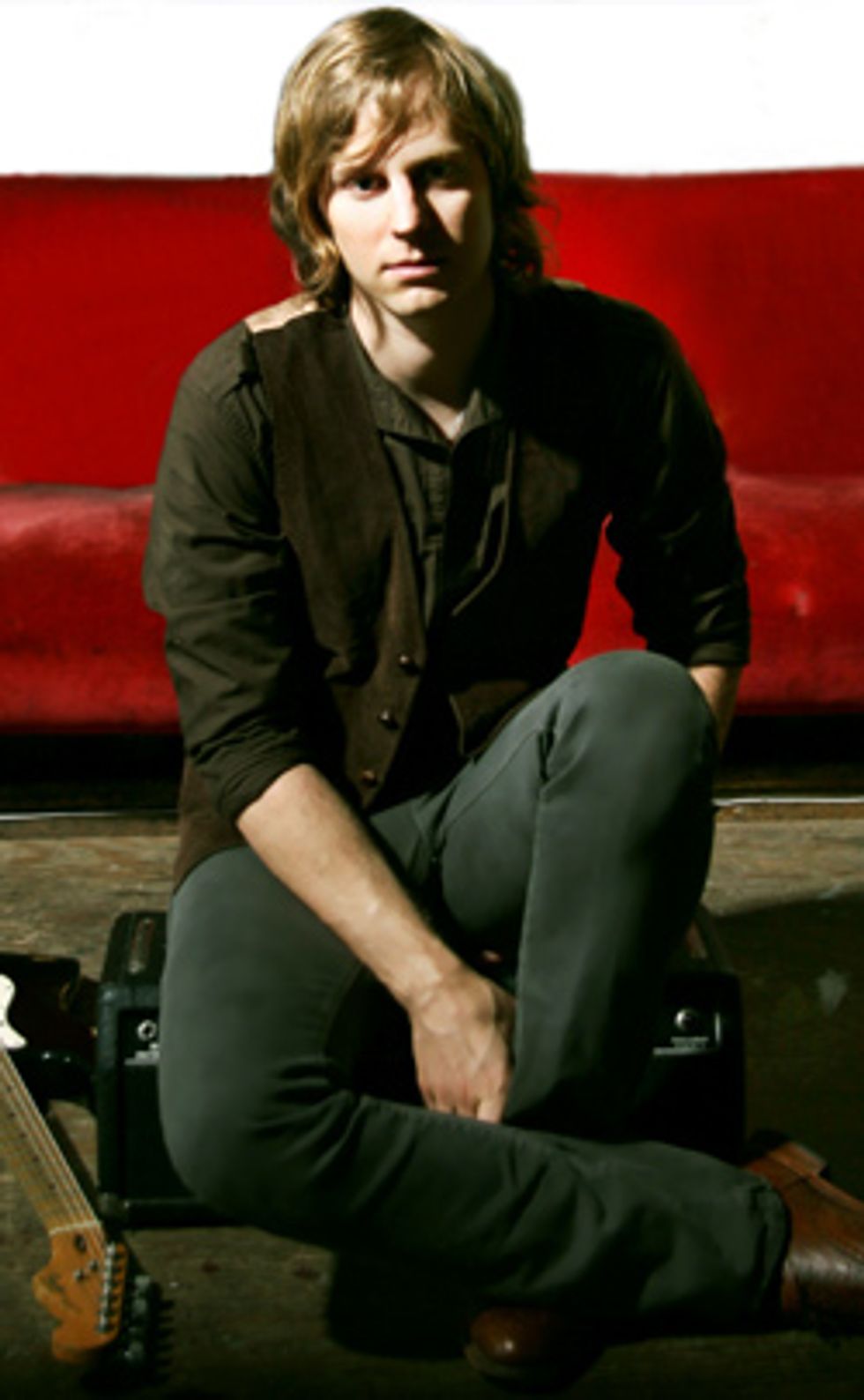 |
| |
Throughout our interview Jared continually challenged convention. Here’s a guy whose band was signed right out of college – forget the fact that he’s a guitar player who actually earned his diploma. Until a year ago, he only owned two guitars and he bought his very first tube amp for the SNL gig. Stylistically, Jared always makes sure to serve the song, but when given the chance he’s more than happy to burn through a few eights. Jared was kind enough to take us through everything from showcasing his first band to an anxiety inducing description of his SNL auditions to doing sessions by trading 1s and 0s back and forth as email attachments.
Let’s start at the beginning – what made you start playing the guitar?
Well, I originally started playing drums in the fourth grade, and around the fifth or sixth grade my parents asked me if I wanted to take private lessons outside of school – they gave me the choice of three instruments: drums, guitar and piano. I choose drums because that’s what I was playing, and they said “No, you already do that in school.” So I said how about piano, and they were like, “Well, you tried that once and it didn’t really work out.” So I was like, “Ok, I guess the guitar.” I started taking lessons and I was terrible; I couldn’t even play like a C chord for a month. Somehow, that year or so I just kind of kept doing it and I’ve been doing it ever since.
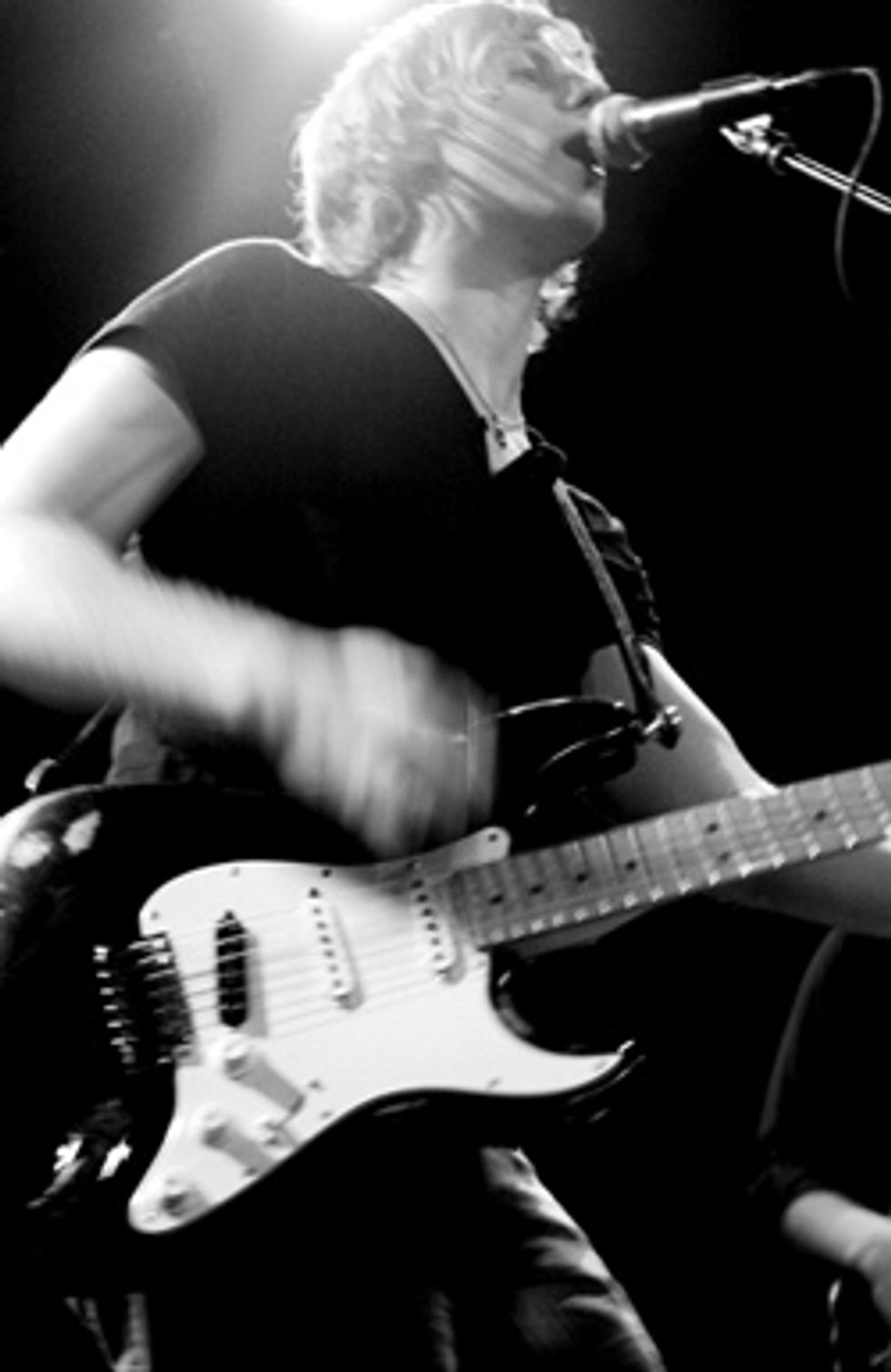 What was your first band experience? Was it while you were still in junior high or high school, or was it later?
What was your first band experience? Was it while you were still in junior high or high school, or was it later?I went to a summer camp that was a performing arts camp, and I played in rock bands there actually. That’s where I met Adam Levine and Jesse Carmichael from Maroon 5. We played in rock bands together at this performing arts camp in upstate New York when I was like 12 or 13. I basically played in rock bands all summer, and then when I was in high school I had my first official, real band called Velvet Frogg with two g’s. That band lasted until the end of college. That was my main thing for a long time. We put out two CDs and it was kind of my first serious, this-is-what-I-wanna-do-with-my- life band.
Were you guys pursuing getting signed or was it more just like coming home on weekends and playing gigs while you were in school? What was the focus?
The problem was that we started out in high school when all we did was listen to Phish, the Allman Brothers, Led Zeppelin, the Dead – jam bands. We were very jam-oriented when we started out, but that’s not a label-friendly thing. As we got older and started listening to more stuff, we got into more of the pop/rock stuff and pursued that kind of thing. We began to get a little bit of interest toward the end of things but I also joined this other band midway through college called Carbondale, just to do something else. At the time, it was a straight rock/pop band and I had never really done that before, so it was a challenge for me.
I went to the Hartt School of Music for one year and studied jazz performance. I then transferred to NYU and did jazz performance, and I eventually got a Bachelor of Science in music education. When I graduated, Carbondale got signed to RCA records, which kind of put a hold on the Velvet Frogg thing. I figured, ok, I should probably do this for a while and see where it takes me.
Sounds like a dream gig – you get out of college and you guys get signed to a major label. What happened with that?
It was like a year or two of us playing around and doing different demos and kind of figuring our shit out. Once we produced the right demo with the right songs and our lawyer started shopping it, we basically did three showcases and got signed, it was really quick. We played one show at Arlene’s Grocery in New York where Jack Rovner, then president at RCA who had been responsible for bands like the Strokes came to our show. He was late; I think he only saw a couple of songs. He told our lawyer that night that he wanted to sign us, so it was pretty exciting. I think we got signed a day after my birthday – it was pretty surreal. The whole thing was unbelievably strange. I’ve always wanted to be in a signed band, it was always a big dream growing up. Back then major labels were the ones that were really able to affect your career. It’s not like today where it doesn’t quite matter.
What time period are we talking about?
This was 2000. We got signed probably in 2002.
So, this is around the time the Strokes and all those kinds of bands had really broken nationally?
Yeah, exactly. So we did a record with a producer named John Fields who has been responsible for bands like Switchfoot and some huge records – Rooney, the Jonas Brothers – he’s a huge producer. We spent half a million dollars on the record, the best mixers, the whole thing. During the middle of the project the president was fired and a new president came in. We were still fine with the new president, so things were still doing okay. Then Clive Davis, the third president, came in when J Records merged with RCA. He cleaned house and dropped 30 or 40 bands, and we were one of them. He didn’t know who we were, so we got dropped and ended up releasing the record ourselves.
You were dropped before the record was released?
Right, typical major label story. We spent some time touring and putting it out ourselves. I always wanted to do my own thing and the band was really cool, but I just played guitar in that band. I had always wanted to write and sing my own songs and stretch out on guitar, and that band was kind of the opposite of that. I just needed to go and follow my heart and do what I wanted. That’s why I left and started doing my own thing again.
Is this when you did The Coast EP? Was that a reaction to your band/label experience?
The first CD of mine, The Coast EP, was done after doing maybe two or three demos of me writing a bunch of different material and finally figuring out the direction I wanted to go in, but playing all of the instruments myself was definitely a direct reaction to being in a band. I wanted to do everything because I didn’t want to deal with anyone else’s comments, arguments, anything.
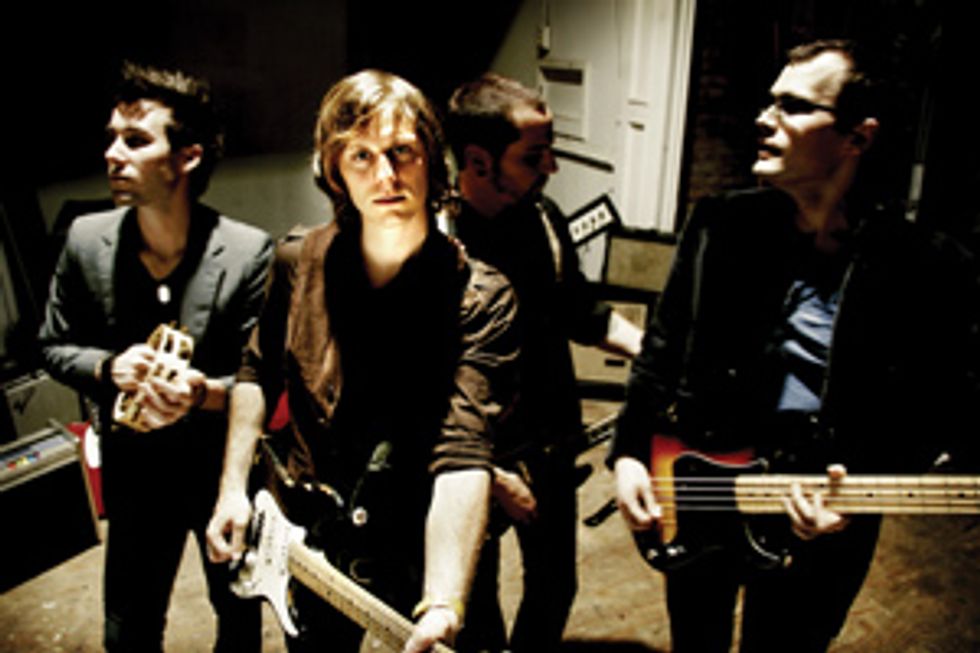 Jared Scharff and the Royals |
Yeah, I wrote my own guitar parts but the singer brought in the songs. We didn’t have the best relationship as a band and I just didn’t want to deal with anything like that – I wanted to do everything the way I wanted to do it. I was pretty efficient at the instruments I played on the demo and I knew that I could do it really quickly. I didn’t want anything to stand in the way of my vision. And also, as part of your question, it always had been a dream of mine to do a record myself, like David Grohl or Paul McCartney. I play all those instruments and love it. I started playing out and I finally got a band together who ended up being some of my closest friends.
The Royals?
Yeah. Eventually, once we all kind of realized that was the jam, we were all like, “All right! Let’s do this!” Then we gave the band a name.
Is the Royals’ material a natural progression from The Coast EP – is it similar stylistically?
As it’s gone on, it has gotten more focused, but, yes, it’s similar material. The material has certainly continued to evolve and become more specific.
Have you been able to get things where you want them?
We put out another EP after that, called Jared Scharff and the Royals. And again, that was all me playing everything, and even from there we’ve gotten more specific. Now we are actually putting out a new EP with the whole band on it – we’re working on that now. That will probably be the most realized sound we’ve had yet.
I noticed that the tunes you have posted on your MySpace page are really radio friendly. The guitar, the riffs and the solos all serve the tune. You’ve got some pretty obvious chops – when you guys are out playing out do you stretch that out a little bit? Do your three minute songs turn into six minute songs or do you keep it pretty focused and structured?
Tom Petty is like my biggest hero of music, and I just wanted to write really great rock-pop songs that were a more classic-oriented but also a little edgy and modern. I just try to create an interesting solo that fits within the framework of that. You still get the guitar aspect of that and people say, “This is kind of different – there’s a guitar solo. No one’s doing that anymore.” That was the goal of that.
Live, there are a couple songs where we do stretch out – there’s probably three songs we stretch out, where we just go off and do the thing. For me that’s really important because that’s what I love to do when I play – I love just having an open road and being able to go where I need to go. And that probably brings me back because of my influences when I was in high school. All those jam bands – Phish and the Dead and the Allman Brothers – were really exploratory and creative, and that was something I was always interested in. So we definitely do a little bit of that, but we don’t do it all the time – we just do a little bit of it for our own fun and to change it up.
How did the Saturday Night Live gig come about?
Well, I’ve known Dr. Luke, who besides being the SNL guitar player for the last ten years is also one of the biggest songwriters out there right now. He’s responsible for “Since You’ve Been Gone” by Kelly Clarkson and “Girlfriend” with Avril Lavigne. You name it, he’s been a part of it. I’ve known him for a bunch of years and he wanted me to audition for the gig. I met Lenny Pickett, the bandleader, and he had everyone come in to hang. I basically brought my guitar, met [Lenny] and talked for two hours, played through a couple of SNL charts and that was the audition. I got a callback to play with the entire rhythm section and Lenny. I’m not exactly sure about the numbers, but I think it was something like 20 or so guitar players that went to that first audition. But every time I talk to somebody they’re like “Yeah, my friend auditioned for that” so maybe there’s more.
I got a callback, along with three other guitarists, to play with the rhythm section at a rehearsal studio on a Sunday morning at 9 a.m. For a musician, that’s pretty much torture – I don’t usually go to sleep until four or five in the morning. But, I just went early and tried to warm up and listen to what was going on. In the rehearsal room, I tried to hear what I was in for – even though I really didn’t – and I did the best I possibly could. That was probably the first time in a really long time where I was actually nervous.
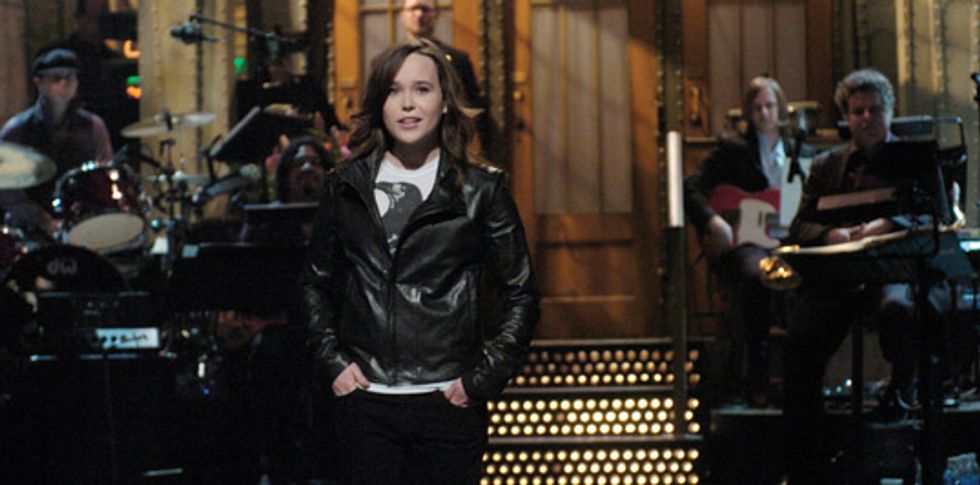
I was going to ask when that “Holy shit! This is Saturday Night Live” moment happened.
It was probably at that point when I knew I was playing with world class musicians. I’ve played with some great musicians in my time, but I haven’t necessarily played with people with credits like this. I was really nervous – it was scary, as well as interesting and exhilarating to play with them.
That was also probably the hardest thing I’ve ever done musically, because I’m not a great sight reader. For SNL, you have to be able to read music and for the auditions we had eight songs that we had to run down. So basically they’d put a song in front of me and say, “It’s this song. We’ll give you a second to look at it.” And then the drummer, Shawn Pelton, goes, “All right, I’m gonna count it off,” and then we’re in! I’m looking at the chart and then he goes bah-bahboomp- boompboomp, and I’m just like, “Oh my God!” and I’m already playing down the song. I’m thinking, “What the hell am I doing?” and then the song’s over. Then he counts in the next tune. It was just crazy.
After I was done, I tried to say hello and thank you to everyone for letting me come in. They were really nice and tried to make me feel as comfortable as they could, even though no matter what they said I wouldn’t have been comfortable, but they were amazing during the auditions.
About a month later I was flying to San Francisco for a vacation. My girlfriend at the time picked me up at the airport. We got in the car and started driving and within five minutes I got a phone call from Lenny. I was like, “Oh shit, this is either gonna ruin my vacation or be amazing.” He said, “Hey man, it’s Lenny. You got the gig!” I was really excited and, to be honest, I was psyched to finally be able to make a living playing music – it took a long time to do that. Plus, I was really honored to be chosen to play with world class musicians. It was a really huge accomplishment for me knowing that I auditioned for that and I got it. Plus, I was excited about all the things that could possibly come out of being on TV, playing music and starting to build up some gear. I’ve never really had money to buy gear.
I’d like to revisit the gear thing later, but this is the kind of gig that your aunt and grandmother could be stoked about. I can imagine it’s one of those gigs that your folks can play up because everybody knows Saturday Night Live. It’s not, “Oh, he got signed and his band is doing well.” That’s nebulous to a lot of people. This is a for-real, huge thing, yeah?
It’s funny, because I’ve been doing music my entire life. I’ve been in a signed band, I’ve done my own stuff, I’ve done a lot of work and no one ever cared. I get this gig, and everyone’s like, “Wow!” Does that mean everything else I’ve done is total crap no one cared about? [Laughs]
It’s just the profile – it’s a very high profile gig. How is the gig itself? What was it like going in for the first time?
After my one week vacation, I was going to be in L.A. for the summer. Lenny sent me a package with a ton of CDs and sheet music so I could get familiar with the material – there were over 150 songs. I spent a lot of my vacation going over that music so that I was ready to go when I had rehearsals with the band. I take what I do very seriously; I’m not the guy that takes it so seriously that you can’t talk to me, but I make sure I’m on time and I’m prepared. I didn’t want to make any mistakes – I wanted to show the rest of the band that they had made the right choice.
I worked my ass off that whole summer on sight reading and working on the material. We had two rehearsals – four or five hour sessions – which was the first time I met everybody, and they were so cool. For the second or third song of the rehearsal we played a Jimi Hendrix tune. When it was time for my solo I just really went for it. After the song, the trumpet player came over and started waving his hands in front of me to cool me off. Everybody was laughing and being kind, so it was pretty funny.
Tell us about playing a show.
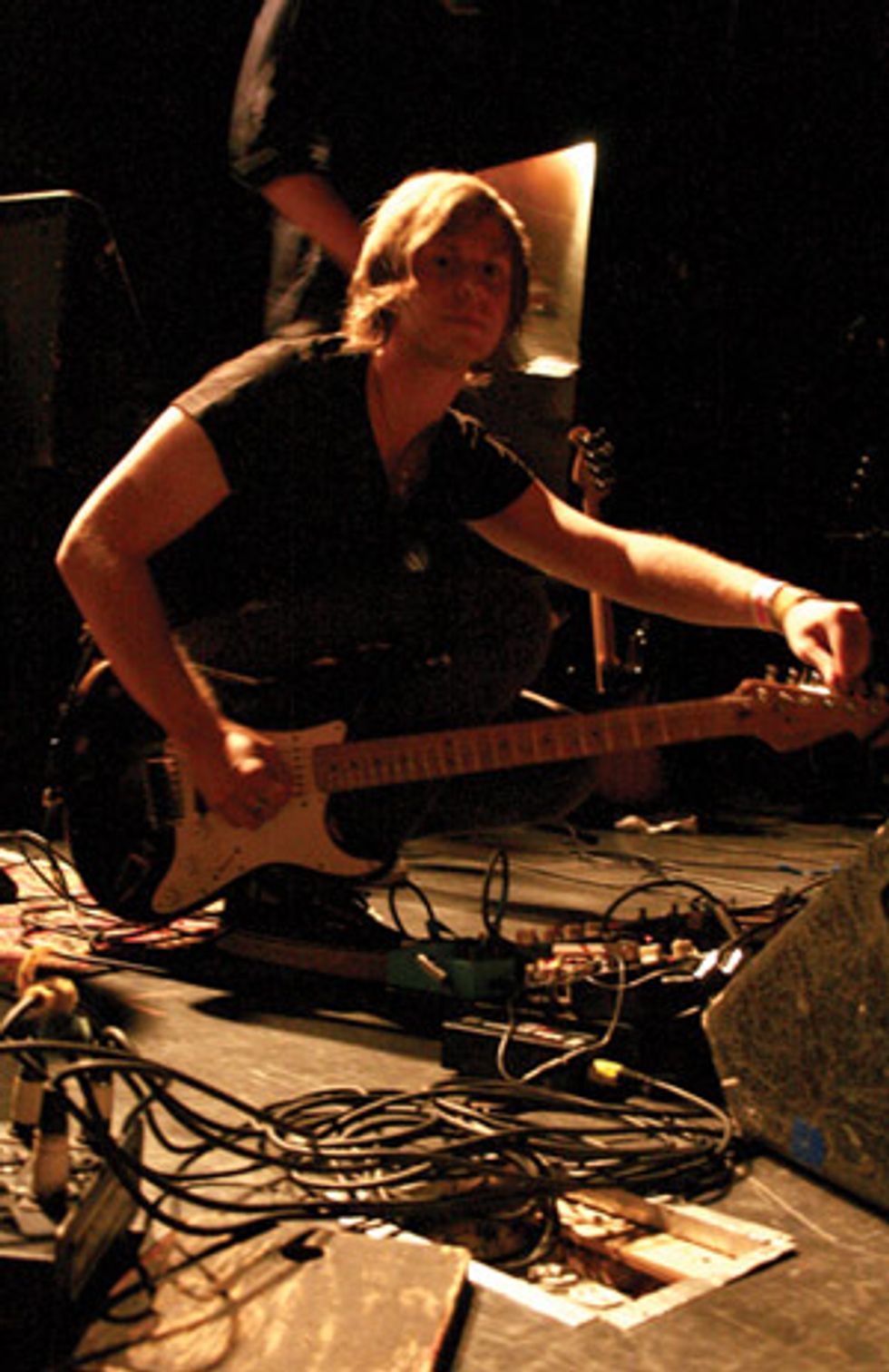 We soundcheck and basically load into Studio 8H, which is where we do the show. When I got there it was kind of a trip; I’m onstage at my station with my new molded in-ears because we don’t have any sound on stage and my amp cabinet is in the back in an isolated trunk – it was strange. It was the first time I was using this new amp I had bought and I could only hear it in the monitor. You have a mix – there’s a ten-piece band and no one is even touching their mix dials – they already have it down – and I’m thinking, “What am I doing?” I kind of started to get it toward the end [of rehearsal] and then we had our first show.
We soundcheck and basically load into Studio 8H, which is where we do the show. When I got there it was kind of a trip; I’m onstage at my station with my new molded in-ears because we don’t have any sound on stage and my amp cabinet is in the back in an isolated trunk – it was strange. It was the first time I was using this new amp I had bought and I could only hear it in the monitor. You have a mix – there’s a ten-piece band and no one is even touching their mix dials – they already have it down – and I’m thinking, “What am I doing?” I kind of started to get it toward the end [of rehearsal] and then we had our first show.What happens on the day of the show is we have band rehearsal from 11a.m. to 1p.m. – I usually show up around 10:30. After that, we have a break until about 4:30 before coming back and doing monologues with the host. We play the song down once, then we have a dinner break. After that, we have the dress rehearsal. That is when we play five or six songs before the show actually starts; three or four tunes and then there’s some standup comedy and then we’ll play one or two more songs for the audience and the show starts.
We play the show, and once the show is over we have a half-hour to an hour break, depending on how long the dress rehearsal runs. Next, we do the same thing over again live. I remember that first dress rehearsal; I couldn’t have been more nervous. One of my friends came down to the dress rehearsal and I had no idea he was coming. It was the kind of thing where I just wanted to do it on my own and not have anyone there – I just wanted to get it over with and he was in the front row – it was nerve-racking. Once we played that monologue song, there was another, “Oh my god, this is SNL”moment. Another thing is that once the monologue starts and I’m on screen, my face itches uncontrollably – of course. Now I know to itch when I’m not on camera. It’s calmed down, but that was insane! How long was it until you caught the show’s rhythm?
It took me many shows to really get into the flow. It’s strange, we play the whole intro thing and we play the theme song, the monologue and then the sketch, so we play two and a half to three minutes of a song and then there’s a sketch – it’s always different. Then we play a song and then there are two sketches. Then we have to get off stage while the other band plays and, of course, come back. I used to be like, “Wait, do we leave now? Where do we go? How long do we stay here? When do we have to come back?” Everyone was just like, “It’s cool. Just come back.” It didn’t make sense to me at first; everyone else thought it was easy because they have been doing it for so long.
When did the coming and going get comfortable for you?
It was right before the writer’s strike – probably our fourth or fifth show – when I finally started to get it, then we had the strike. Of course, the one year that I get here, there’s a writer’s strike. That’s so appropriate for my life!
Along with the SNL gig, you’re also doing session work on the West coast. Were you doing this beforehand, or has this been happening since the Saturday Night Live gig?
I started coming out to L.A. last year. My ex-girlfriend lived here, so I was coming out quite a bit because of that and the music thing. That started during the SNL season – I hadn’t really been to L.A. that much before that. I’ve started doing more session work since then because I was out here often and had the time, especially during the writer’s strike. I used to do session work in New York, but there’s not a lot of rock/pop things happening for studio musicians – a lot of people are doing everything at home. But in L.A. there’s still a huge studio scene; every time I come out here I’m working.
What kind of work are you doing?
I’m primarily doing two things: recording sessions for artists like Kate Voegele – she’s on One Tree Hill and has a MySpace record, a soul, R&B-type record for Josh Hogue and a rock/pop session for Ace Enders [ex-The Early November] for Drive-Thru Records. I’ve done all sorts of different things, which is really fun for me. The people who call me have me playing all types of sessions. I’m also taking this time to write. I do a lot with other writers, and I have a writing partner, as well as a bunch of other writers that I work with. We’re writing and producing these songs to get pitched for major Top 40 acts.
You were talking about doing some home-based session work – would you walk us through a typical session?
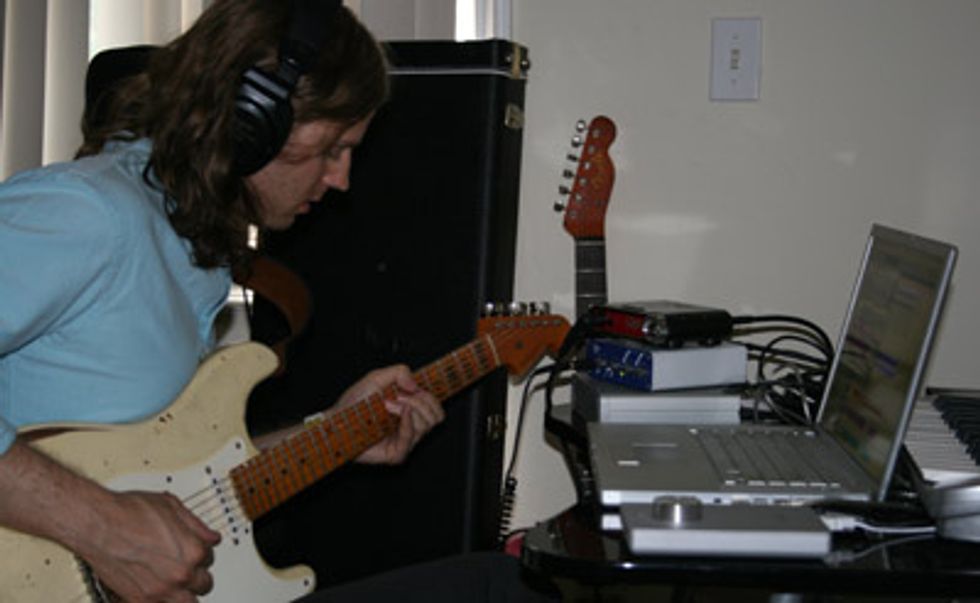 I get a lot of emails and calls asking if I will do a session. They’ll send me some mp3 files, I do what I want and send it back. Sometimes they’re songwriting demos, sometimes they are finished products; I just did a Kid Rock remix the other day. Let’s use that as an example. Atlantic asked Point Guard, the producer, to do a remix, so he totally changed the whole thing, sent it to me, and said “Rock some guitars on it.” The best part about it is these people know that I can do a lot of different shit so they never tell me what to do. It gives me some creative freedom which makes it really fun to do – it’s like, “Do your thing.”
I get a lot of emails and calls asking if I will do a session. They’ll send me some mp3 files, I do what I want and send it back. Sometimes they’re songwriting demos, sometimes they are finished products; I just did a Kid Rock remix the other day. Let’s use that as an example. Atlantic asked Point Guard, the producer, to do a remix, so he totally changed the whole thing, sent it to me, and said “Rock some guitars on it.” The best part about it is these people know that I can do a lot of different shit so they never tell me what to do. It gives me some creative freedom which makes it really fun to do – it’s like, “Do your thing.”I really try to play what’s appropriate for the song; whatever vibe I get from the song I try to enhance. This song had a Michael Jackson “Beat It” vibe, so I really just started doing this kind of crazy Thriller-era guitar part. I used Line 6 GearBox – I’m a huge fan. I plug it into my Pro Tools and two hours later I have a rockin’ track and I’m done. I just save all the files as mp3s and call it a day. I’ve done that for a lot of people.
Let’s stay with gear for a second. You’re a Strat guy, but you keep it pretty minimal, yeah? You had to buy the amp for the SNL gig, didn’t you?
Yep, yep.
What did you end up buying?
From 1990 until about a year ago I had two guitars, that was it. Those were the only guitars I had! I owned an amp in high school that was a solid-state Fender Stage 112 that I still used even when I was signed to RCA! I’m terrible at making decisions. I always wanted to get a tube amp, but I used so many different sounds on the Carbondale record that there was never any one amp that stood out. So I just used an amp that I had forever and knew what it sounded like. It had a good clean sound and I used a pedalboard – it was easy, call it a day. It became this funny thing; since the record I was supposed to buy an amp, and it turned into three years of never buying an amp. When I’ve done my own stuff, I used a friend’s amp. He has this Fender Hot Rod Blues Deluxe, or something like that. I’m not exactly sure. I’m terrible with this stuff.
How many speakers does it have?
It’s a 1x12 combo. I live in New York City and I don’t have a car; you don’t want to be traveling with a big amp – you really can’t do that. So you’re kind of stuck with a small combo amp that needs to have a little bit of power and sounds decent. And his did – it sounded good with pedals, you know? With SNL, you’re not allowed to have an amp on stage, and I figured it was time for me to get a tube amp. I’ve been playing guitar for, what, 15 years? It’s about time I get a real amp.
You can treat yourself, you’ve got an nice gig.
I wanted to get an amp that would be right for this gig, so I did a lot of research, asking around and seeing what people had to say. I couldn’t really get a total rock amp because a lot of this stuff is clean funk and blues, but I also needed something with a rockin’ solo sound – that’s where I can express my individuality.
 I looked at a bunch of different things and eventually plugged into Bruno Super 100. I had literally never heard anything like it. I started playing and I had never sounded better. I was like, “Holy shit! This is my sound!” I heard what I’ve always wanted to hear when I play a lead – it was retarded, it just ripped my face off, I was so into it! The amp head was like $6200, way out of my budget. I thought, “There’s no way I can do this. This is a rock amp, it probably doesn’t even have a good clean.” And I was checking out the clean channel and it actually sounded pretty good. It was a 6L6 amp and I was looking for more of a Fender sound because I knew Lenny Pickett was like a big fan of the old Fender Bassmans, so I didn’t want to stray too far from that – I didn’t want to go British. I played with the amp for a while and the clean sound was really good and it stayed clean, even for a two-channel amp that had that a searing, articulate lead sound. I got the amp and used it on the show – it was the very first amp that I actually ever owned that was like a “big boy” amp.
I looked at a bunch of different things and eventually plugged into Bruno Super 100. I had literally never heard anything like it. I started playing and I had never sounded better. I was like, “Holy shit! This is my sound!” I heard what I’ve always wanted to hear when I play a lead – it was retarded, it just ripped my face off, I was so into it! The amp head was like $6200, way out of my budget. I thought, “There’s no way I can do this. This is a rock amp, it probably doesn’t even have a good clean.” And I was checking out the clean channel and it actually sounded pretty good. It was a 6L6 amp and I was looking for more of a Fender sound because I knew Lenny Pickett was like a big fan of the old Fender Bassmans, so I didn’t want to stray too far from that – I didn’t want to go British. I played with the amp for a while and the clean sound was really good and it stayed clean, even for a two-channel amp that had that a searing, articulate lead sound. I got the amp and used it on the show – it was the very first amp that I actually ever owned that was like a “big boy” amp.Now I love using all sorts of stuff. I’m a huge Matchless fan and I’m getting into more, different sounds. Now I’m really into the British EL84 and EL34 sounds I was never into before. I’m appreciating different amps and it would be fun to try out some different amps on the show. I recently checked out some 65Amps for a recording session here; Dan [Boul, owner of 65Amps] brought down three different heads for us to use, and they sounded great, too.
The 65s have a nice thing going on; Dan and Peter are on to something.
Yeah, their new amp, the Monterey, sounded phenomenal. I’m more into gear now that I have somewhere where I can use it.
Let’s go back to the Strats for a second.
I just had those two guitars and I started contacting some other people. I have a good relationship with Fender and they’ve been really good to me. I’ve always used Strats, but I also wanted to get some other things. I came upon this Nash Strat which I love and sounds amazing. I’ve used that on the show, along with a KLH [Custom Relics] Tele. I’ve always wanted a Tele and I really like this stuff that these guys are doing where they relic the guitar. They feel really good; they sound and feel old. I don’t really like pretty, clean and new; I like character,
Jared’s Gearbox When Jared’s entertaining the masses, here’s what he plugs into: GUITARS 2 Fender Strats Nash Stratocaster KLH Custom Relic Telecaster First Act Delia AMPS Bruno Super Lead 100 Bruno 2x12 cab w/ 60-watt Celestions 1968 Fender Vibro Champ EFFECTS Analog Man Sun Face Boss Tuner Cusack Tap-A-Whirl EH Memory Man Fulltone Fulldrive Fulltone Supa-Trem H.B.E. Big D H.B.E. Budda Wah H.B.E. Germania H.B.E. Uno Mos 2-Knob Keeley Compressor Keeley-modded - Tube Screamer Line 6 DL4 Line 6 Verbzilla Sweet Sound Pro Bender Sweet Sound Ultra Vibe T-Rex Replica ACCESSORIES D’Addario strings Planet Waves cables Pedaltrain pedalboards | ||
Tell us about some of your pedals.
When I got this SNL gig I also started looking at what would be the right pedals for the show. I did a lot of research, and you know there are a lot of good pedal makers out there, but the ones that I am really into lately are Analog Man, Keeley, Sweet Sound and Home Brew Electronics – those are the majority of the pedals that I use. For my SNL solos I have a HBE Wah and a pedal called the Uno Mos, which is a one-knob gain pedal. I also use Keeley’s Modded Tube Screamer; it sounds phenomenal. In my opinion, it’s the best sounding Tube Screamer around; I take it anywhere I go. There’s also a Keeley Compressor, an Analog Man Sun Face, which is the gnarliest fuzz – I bring that to the L.A. sessions. I use the Sweet Sound Ultra Vibe for SNL because it’s just good to have a little bit of that sound. What else? The Sweet Sound Pro Bender for more fun stuff. I also always bring my [EH] Memory Man, which is one of my favorite toys of all time – I can’t go to any session without it.
Is it vintage or a newer one?
I got it in 2000. It sounds better than the newer ones but it’s not like vintage vintage. It just sounds amazing. When I know I’m gonna be [in L.A.] for a long time, I ship out my Tele, but I always bring my Nash [Strat]. Right now, I have my Nash and the KLH here, which I just lent to James Valentine from Maroon 5 for a show. So basically, a Strat and Tele, those are my jams. For SNL I also wanted a 335- style guitar just because we do a lot of jazz and stuff that that guitar would sound really good on. So I ended up getting in contact with First Act and they made me a really amazing custom Delia. I’ve used that on the show.
The First Act custom shop stuff is really sick.
Yeah, they’re doing great stuff. And that guitar just kills – it sounds amazing. Those guys at First Act are really nice and cool. I’m originally a Fender guy, and I’ll always be a Fender guy at heart, but I’m bringing some other stuff into the arsenal. But at the end of the day, it’s always a Strat or a Tele.
jaredscharff.com
myspace.com/jaredscharffmusic




![Rig Rundown: AFI [2025]](https://www.premierguitar.com/media-library/youtube.jpg?id=62064741&width=1245&height=700&quality=70&coordinates=0%2C0%2C0%2C0)












 Shop Scott's Rig
Shop Scott's Rig

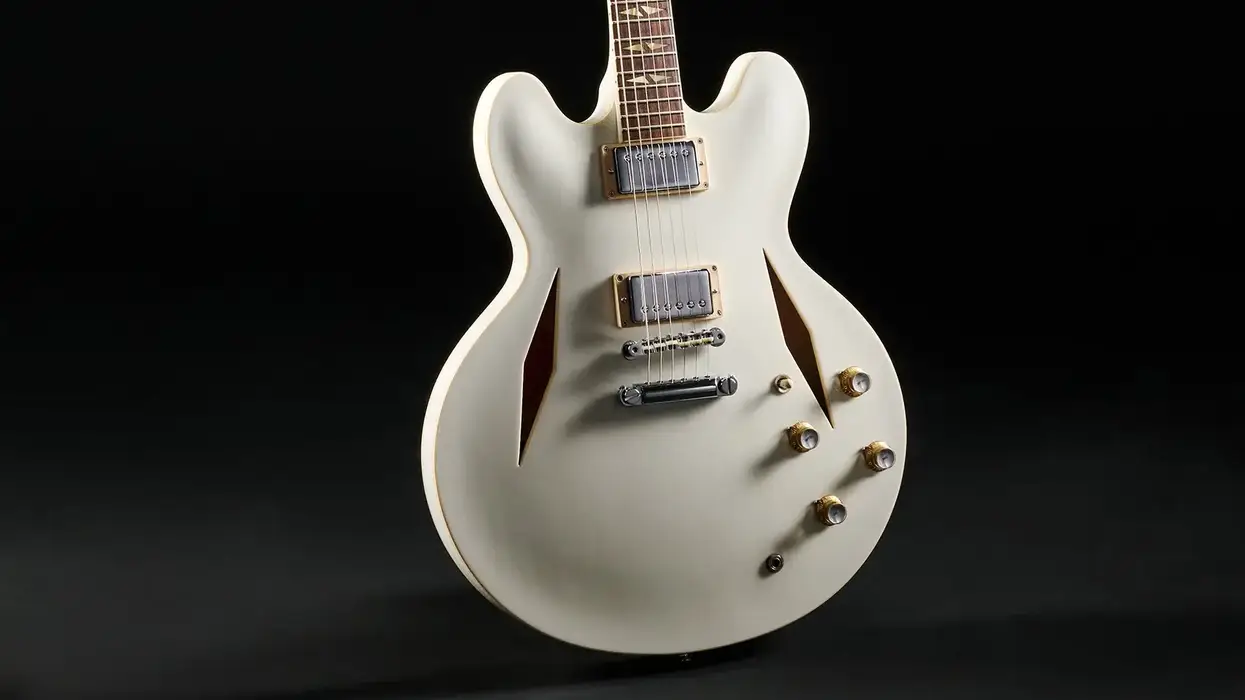


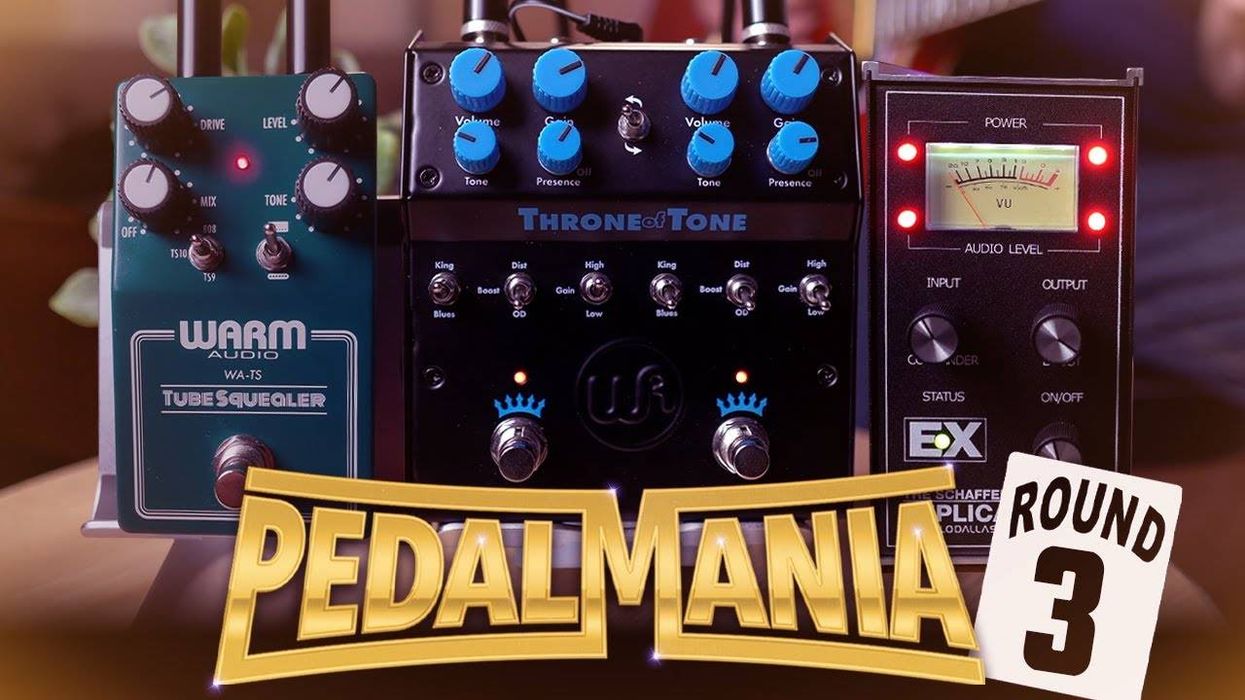








 Zach loves his Sovtek Mig 60 head, which he plays through a cab he built himself at a pipe-organ shop in Denver. Every glue joint is lined with thin leather for maximum air tightness, and it’s stocked with Celestion G12M Greenback speakers.
Zach loves his Sovtek Mig 60 head, which he plays through a cab he built himself at a pipe-organ shop in Denver. Every glue joint is lined with thin leather for maximum air tightness, and it’s stocked with Celestion G12M Greenback speakers.












![Devon Eisenbarger [Katy Perry] Rig Rundown](https://www.premierguitar.com/media-library/youtube.jpg?id=61774583&width=1245&height=700&quality=70&coordinates=0%2C0%2C0%2C0)






